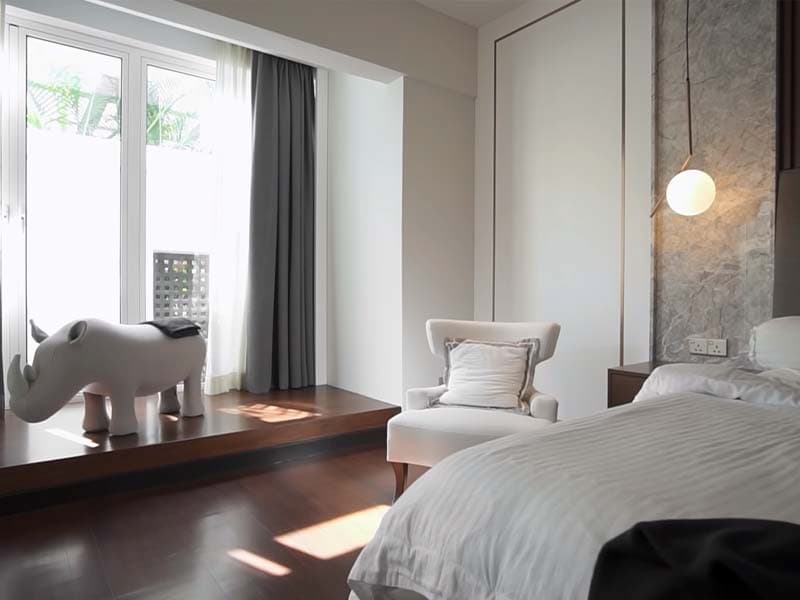How does interior design affect our daily lives?
The spaces we inhabit have a profound influence on our daily lives, and one aspect that plays a significant role is interior design. Interior design encompasses the art and science of creating functional and aesthetically pleasing environments within buildings.
From our homes to workplaces, interior design choices have the power to shape our emotions, enhance our productivity, improve our well-being, and even reflect our personal identity. In this article, we explore the various ways in which interior design affects our daily lives.
Emotional Impact
The colors, lighting, and spatial arrangement of a space can evoke different emotions and moods. Color psychology, for instance, suggests that colors have the ability to influence our feelings and behaviors. Warm colors like red and orange can create a sense of energy and warmth, while cooler tones such as blue and green can promote a calming effect.
Lighting also plays a crucial role in setting the mood, with natural light fostering a positive atmosphere. Additionally, the way furniture and elements are arranged can contribute to a sense of well-being, with open and clutter-free spaces promoting relaxation and peace of mind.
Functional Efficiency
An efficiently designed space can significantly impact our daily routines and activities. Optimizing space utilization involves considering furniture placement and flow, ensuring that movement within a room feels natural and intuitive. Smart storage solutions help reduce clutter, allowing for a more organized and efficient environment.
Furthermore, ergonomic design principles can enhance productivity and comfort, providing proper support and alignment for our bodies. Thoughtful workspace design encourages focus and concentration, while efficient organization systems make it easier to locate and access items.
Health and Well-being
The design of our living and working spaces can have a profound impact on our physical and mental health. By prioritizing factors such as indoor air quality, ventilation, and the use of sustainable materials, interior design can contribute to a healthier environment.
Good acoustics and noise reduction techniques minimize distractions and promote a sense of tranquility. Moreover, incorporating elements of biophilic design, which connects us with nature, can improve our mental well-being by reducing stress and enhancing creativity.
Designing spaces for relaxation and rejuvenation, such as cozy reading nooks or soothing bedroom retreats, can contribute to a more balanced and harmonious lifestyle.
Personal Expression and Identity
Our living spaces are an extension of our personalities and values. Interior design allows us to express ourselves and create environments that reflect our unique style. It provides a sense of belonging and comfort, making us feel truly at home. The design choices we make can also boost our self-esteem and confidence, as we surround ourselves with elements that resonate with our individuality.
Social Interaction and Relationships
Interior design not only affects our individual experiences but also our interactions with others. Well-designed spaces can facilitate social connections by providing open and inviting areas for gatherings and conversations. Thoughtfully arranged seating arrangements can promote positive interactions and foster a sense of inclusivity. Furthermore, considering the needs of different age groups can create spaces that are conducive to multi-generational interactions and strengthen relationships within families and communities.
Cultural and Historical Significance
Interior design is deeply intertwined with cultural and historical contexts. Our design choices can reflect our cultural backgrounds, paying homage to traditions and heritage. Additionally, preserving and appreciating historical architecture and design allows us to connect with the past and celebrate the richness of human history.
How does interior design affect human behavior?
Interior design has a significant influence on human behavior. It shapes our emotions, affects our cognitive processes, and influences our interactions with others. Here are some ways in which interior design affects human behavior:
- Mood and Emotions: Interior design elements such as colors, lighting, and textures can evoke specific emotions. Warm colors like red and orange can stimulate energy and excitement, while cooler colors like blue and green promote calmness and relaxation. By strategically using colors and textures, interior design can create a desired atmosphere and positively impact our moods.
- Productivity and Focus: A well-designed space can enhance productivity and focus. Factors like lighting, ergonomics, and organization play crucial roles. Sufficient natural light and appropriate artificial lighting can improve alertness and concentration. Ergonomic furniture and proper spatial arrangements promote comfort and minimize distractions, allowing individuals to stay focused on their tasks.
- Cognitive Functioning: The layout and organization of a space can influence cognitive processes such as memory and problem-solving. A clear and logical spatial arrangement helps individuals navigate and remember information. Furthermore, incorporating elements of nature and biophilic design has been shown to enhance cognitive functioning, creativity, and overall well-being.
- User Experience: Thoughtful interior design considers the needs and preferences of the users. By understanding user behavior and considering factors such as accessibility, comfort, and convenience, designers can create spaces that are intuitive and user-friendly. When spaces are designed with the user in mind, it can enhance satisfaction and overall experience, encouraging positive behavior and engagement with the environment.
Conclusion
Interior design has a profound impact on our daily lives, influencing our emotions, functionality, well-being, personal expression, social interactions, and even cultural connections. By understanding the various aspects of interior design and its effects, we can make conscious choices to create spaces that enhance our lives.
Whether it’s transforming our homes into havens of relaxation, optimizing our workspaces for productivity, or creating environments that promote social connections, thoughtful interior design can truly transform the way we experience our daily lives.
